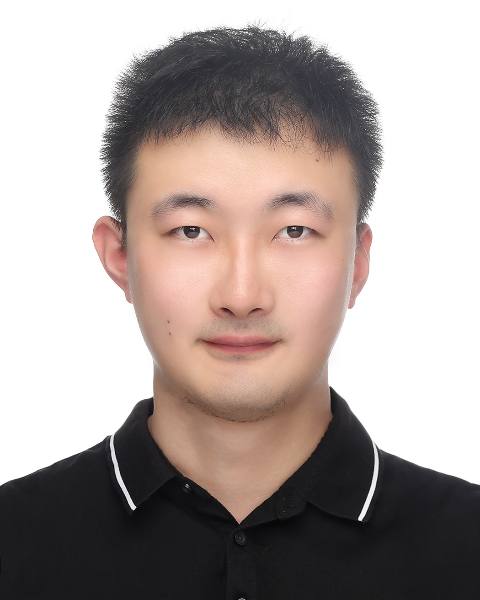PQA 06 - PQA 06 Biology and Patient Reported Outcomes/QoL/Survivorship Poster Q&A
2834 - Prediction of Parotid Gland Changes in Radiation-Induced Oral Mucositis of Nasopharyngeal Carcinoma Based on Metabolism-Imaging Bimodal Omics
Monday, September 30, 2024
5:00 PM – 6:00 PM ET
Location: Hall C
Screen: 24

Lei Ji, MD
The First Affiliated Hospital of Soochow University
Soochow, Jiangsu
Presenter(s)
L. Ji; Department of Radiation Oncology, The First Affiliated Hospital of Soochow University, suzhou, jiangsu Province, China
Purpose/Objective(s): To analyze the alterations in saliva metabolites among patients with nasopharyngeal carcinoma both pre-radiotherapy and post-radiotherapy by metabolomics. To analyze the change in saliva metabolites in patients with nasopharyngeal carcinoma before and after radiotherapy by applying MR radiomics features. To establish a foundation for early prediction of radiation-induced parotid gland injury. Materials/
Methods: 21 patients with nasopharyngeal carcinoma who have undergone radiotherapy in the First Affiliated Hospital of Soochow University between 2022-1-1 and 2022-12-31 were selected in this study. Saliva specimens and MR Images were obtained before the first radiotherapy and after the last radiotherapy. Metabolites in saliva samples were detected using metabolomics, and the alterations in metabolite levels before and after radiotherapy were analyzed. The parotid gland was delineated on T1WI and T2WI sequences as regions of interest, from which the imaging features were extracted and screened to obtain stable characteristics. Subsequently, the changes in imaging features before and after radiotherapy were analyzed. The metabolic-imaging damage profile of parotid radiotherapy was derived by conducting correlation analysis on the omics data from both modalities.
Results: During parotid gland irradiation, changes in saliva metabolites and pathways more accurately reflect the combined effects of inflammation and tumor. The study identified six target metabolites.A total of 668 metabolites were detected in the saliva samples of the radiotherapy group. The T1WI and T2WI yielded a total of 1130 image omics features, and after screening using the lasso regression 5-fold cross-validation method, six of T1WI and four of T2WI non-zero coefficient image omics features were obtained.The Metascores, Radscore-T1 and Radscore-T2 scores were computed for each patient through the linear fusion of selected features.Through the correlation analysis of them, it is evident that there exists a strong and statistically significant correlation between Metascores and both Radscore-T1 and Radscore-T2 scores. Additionally, the readily obtainable imaging data can effectively reflect changes in saliva metabolomics. The integration of these two modalities enables a more comprehensive analysis model for assessing parotid gland injury.
Conclusion: Radiation-induced injury of the parotid gland is a prevalent occurrence during and after radical radiotherapy for nasopharyngeal carcinoma, significantly impacting treatment compliance and patients quality of life. This study presents an initial description of a comprehensive radiation damage map based on the parotid gland, identifying specific molecular markers and imaging characteristics that can effectively reflect the progression of this damage. By constructing dual-modal omics data, we aim to establish a metabolic-imaging damage map for parotid gland radiotherapy.
Purpose/Objective(s): To analyze the alterations in saliva metabolites among patients with nasopharyngeal carcinoma both pre-radiotherapy and post-radiotherapy by metabolomics. To analyze the change in saliva metabolites in patients with nasopharyngeal carcinoma before and after radiotherapy by applying MR radiomics features. To establish a foundation for early prediction of radiation-induced parotid gland injury. Materials/
Methods: 21 patients with nasopharyngeal carcinoma who have undergone radiotherapy in the First Affiliated Hospital of Soochow University between 2022-1-1 and 2022-12-31 were selected in this study. Saliva specimens and MR Images were obtained before the first radiotherapy and after the last radiotherapy. Metabolites in saliva samples were detected using metabolomics, and the alterations in metabolite levels before and after radiotherapy were analyzed. The parotid gland was delineated on T1WI and T2WI sequences as regions of interest, from which the imaging features were extracted and screened to obtain stable characteristics. Subsequently, the changes in imaging features before and after radiotherapy were analyzed. The metabolic-imaging damage profile of parotid radiotherapy was derived by conducting correlation analysis on the omics data from both modalities.
Results: During parotid gland irradiation, changes in saliva metabolites and pathways more accurately reflect the combined effects of inflammation and tumor. The study identified six target metabolites.A total of 668 metabolites were detected in the saliva samples of the radiotherapy group. The T1WI and T2WI yielded a total of 1130 image omics features, and after screening using the lasso regression 5-fold cross-validation method, six of T1WI and four of T2WI non-zero coefficient image omics features were obtained.The Metascores, Radscore-T1 and Radscore-T2 scores were computed for each patient through the linear fusion of selected features.Through the correlation analysis of them, it is evident that there exists a strong and statistically significant correlation between Metascores and both Radscore-T1 and Radscore-T2 scores. Additionally, the readily obtainable imaging data can effectively reflect changes in saliva metabolomics. The integration of these two modalities enables a more comprehensive analysis model for assessing parotid gland injury.
Conclusion: Radiation-induced injury of the parotid gland is a prevalent occurrence during and after radical radiotherapy for nasopharyngeal carcinoma, significantly impacting treatment compliance and patients quality of life. This study presents an initial description of a comprehensive radiation damage map based on the parotid gland, identifying specific molecular markers and imaging characteristics that can effectively reflect the progression of this damage. By constructing dual-modal omics data, we aim to establish a metabolic-imaging damage map for parotid gland radiotherapy.
